|
HOME: www.hiltonpond.org |
|||
THIS WEEK at HILTON POND Subscribe for free to our award-winning nature newsletter (Back to Preceding Week; on to Next Week) |
All text, maps, charts & photos © Hilton Pond Center WINTER FINCH ROUND-UP: Two days before last Christmas we were pleased to capture and band three Pine Siskins (PISI)--the first of 2014 at Hilton Pond Center. Usually siskins don't show up here until sometime in January, so we were hopeful their early arrival meant this was going to be a good "winter finch winter." Alas, we banded only seven more PISI the rest of December and just 23 the whole month of January--a far cry from those banner years when we were up to our eyebrows in these little seed-eating birds from the Canadian forests. It was just a matter of being patient and waiting for February, we suppose, for on the first day of this month we trapped 38 Pine Siskins--and the game was on! Groundhog Day (2 February) we added 25 more PISI, caught another 19 the next day, and processed 40 on the 4th. To shorten the story a bit, during the first two weeks of February 2015 we caught a bushel full of siskins; to be exact, the number was 320--not bad for two weeks of work. It was indeed a Pine Siskin irruption, as dozens of finches (above) literally carpeted the ground beneath our sunflower seed feeders!
All text, maps, charts & photos © Hilton Pond Center There is a quartet of birds we call "winter finches," those being American Goldfinch (AMGO), House Finch (HOFI), Pine Siskin (PISI), and Purple Finch (PUFI). We do have a few AMGO during summer--in fact, the local breeding population appears to be increasing--and some House Finches also occur on a year-round basis. Nonetheless, our biggest influx of these four finches comes during the "winter" season, i.e., late October through late April, and those numbers are indeed big. In fact, on 10 February we banded our 9,500th American Goldfinch--the adult male in the photo above--and on 13 February a Pine Siskin became the 30,000 "winter finch" banded at Hilton Pond Center since 1982. That's a LOT of finches! All text, maps, charts & photos © Hilton Pond Center Most years during the past 34 we've had lots of one or more of those winter finches to band; for many winters, House Finches were most plentiful by far, but their numbers have diminished and American Goldfinches have become the single most commonly banded species at the Center. Because Pine Siskins truly are irruptive and don't appear every year in the Carolina Piedmont, it's understandable they would be the least commonly banded of our winter finches. Even so, with 30,000 finches banded, those four species make up almost half of all birds banded at Hilton Pond Center; to be exact--as of 14 February 2014--they comprised 48.87% of the 61,500 birds we had banded. (As noted on the chart above, this percentage was a jump from 30 March 2014 when the finches' previous total was 48.57% of all birds banded. Please note each of our charts can be clicked on to open a larger, more readable version in a new browser window.)
All text, maps, charts & photos © Hilton Pond Center In a good finch winter like the current one, it's not at all uncommon to have all four finch species at a feeder at the same time--as in the photo above. The two red birds near the feeder top are male House Finches (with a female just below on the right), a Purple Finch of unknown sex is on the feeder tray at bottom center. Male and female American Goldfinches sit on the tray and feeder perches, and dark and heavily streaked Pine Siskins are all over the place--including one coming in for a landing from the left. We so many birds around, we thought it appropriate to take a closer look at the four winter finches and discuss a few things we've learned about them at Hilton Pond Center. AMERICAN GOLDFINCH (AMGO)
All text, maps, charts & photos © Hilton Pond Center Perhaps most familiar of our four winter finches is the American Goldfinch. During breeding season adult males are unmistakable as "wild canaries" with black wings and foreheads, but in winter the bright yellow male acquires more subdued plumage (above). Come February, jet black wings remain on males of any age, while older (after-second-year) males exhibit bright shoulder patches and usually have some dark forehead speckling.
All text, maps, charts & photos © Hilton Pond Center Second-year male AMGO look a lot like older males except the shoulder (above) is "salt-and-pepper" and not very noticeable at the feeder. Again, these younger males almost always show a black feather or two in the forehead.
All text, maps, charts & photos © Hilton Pond Center Female American Goldfinches (above) look much like winter males, with relatively drab plumage. There's no bright shoulder and wings are paler black, and the forehead never has any black feathers. There's considerable variation in just how black a female's wing feathers appear; some are dark enough to warrant a second look before conclusively deciding the sex of an individual bird. Note that in winter the mandibles of all American Goldfinches are very dark; when breeding hormones kick in come spring, carotene pigments from the birds' food will cause the bills to turn bright orange. All text, maps, charts & photos © Hilton Pond Center American Goldfinches are a genuine success story at Hilton Pond Center, as shown on the chart above. We've always had good numbers of these birds in winter--the 34-year average was 281 bandings as of 14 February 2015--with a spectacular irruption in 2007 when we banded 838 AMGO. The red line shows a definite local increase in AMGO--a trend enhanced by increasing numbers of summer bandings. Although we haven't yet found a nest around Hilton Pond, female goldfinches with very edematous brood patches AND recent fledglings are undeniable evidence they are now nesting locally and perhaps expanding their breeding range into more of South Carolina. Historically, this species bred more regularly a bit further north, as indicated by breeding season encounters of "our" winter-banded goldfinches in Maine, Maryland, and New York State. PINE SISKIN (PISI)
All text, maps, charts & photos © Hilton Pond Center The Pine Siskin (above) is a congener of the American Goldfinch, i.e., it's closely enough related to be in the same genus. (Personal note: We take delight in the siskin's current scientific name, Spinus pinus.) Because of their heavily streaked backs and breasts folks sometimes confuse them with sparrows, but one look at the sharply pointed bill says otherwise. Pine Siskins are not reliably sexed at the feeder--except to say some percentage of older males like the one above will have more lemon-yellow in wing and tail. Females are never this brightly colored.
All text, maps, charts & photos © Hilton Pond Center It's interesting that siskins have a white wing bar formed by the tips of the secondary coverts (above), but the yellow wing color occurs at the bases of the primary and secondary flight feathers. Yellow in the tail also occurs at feather bases.
All text, maps, charts & photos © Hilton Pond Center In-the-hand, perhaps 5% of Pine Siskins can be sexed reliably via wing chord measurement, shown above. If the measure is 76mm or more it is almost certainly a male, while 68mm or less indicates female. The bird in the photo has a wing chord of 71.5, meaning it must be reported--like the rest of the 95%--as sex unknown--especially since it did not show a great deal of yellow in wing or tail. (NOTE: The bird always knows what sex it is, but the bander sometimes does not.)
All text, maps, charts & photos © Hilton Pond Center Ageing Pine Siskins is quite a bit easier--most of the time--by simply looking at the rectrices (tail feathers). If all or most have pointed tips (above)--and usually with some degree of wear--the bander can be confident this is a bird in its first winter.
All text, maps, charts & photos © Hilton Pond Center By comparison, well-formed unworn rectrices with rounded tips (above) are by February the sign of an after-second-year bird. If there is some question about tail feather shape--or if the rectrices cannot be "read" reliably when they wet from rain or snow--a February siskin is reported as after-hatch-year. (NOTE: In our experience, the pointy vs. round rectrices criterion also works for ageing female American Goldfinches, but not as well.)
All text, maps, charts & photos © Hilton Pond Center And just to re-emphasize our comment about the shape of the Pine Siskin's bill, check out the photo above. The PISI's mandibles are perfectly tapered to a stiletto-like tip, adapted for gleaning tiny caterpillars and adult insects and nipping small seeds such as those of thistle, but equally adapted to opening the soft shell of black oil sunflower seeds. All text, maps, charts & photos © Hilton Pond Center Pine Siskins are the most irruptive and unpredictable of the four finches at Hilton Pond Center. As shown on the chart above, many winters we see few to none, while occasionally we are nearly overrun by what was certainly more than the 615 we were able to band in our record setting year of 2011. Big-number years--like the one we're having in 2015--have raised our average annual captures to 84, but the almost-horizontal red trend line mistakenly suggests a stable number of siskins at the Center from year to year. Incidentally, two Pine Siskins banded a year apart at Hilton Pond were recaptured an hour apart during the breeding season by Dennis Meyer in Duluth MN. Other banded PISI from the Center were encountered during apparent non-irruptive winters in Ontario and Massachusetts.
All text, maps, charts & photos © Hilton Pond Center PURPLE FINCH (PUFI) Our third "winter finch" at Hilton Pond Center is the Purple Finch (after-second-year male, above), a species that nests primarily in southern Canada, with smaller breeding populations in New England and down the Appalachian chain into Virginia's highlands. Despite a common misconception, Purple Finches do NOT occur in the Carolinas from late spring through early fall--except for a few possible exceptions at the very highest elevations in northwestern North Carolina. (NOTE: The American Ornithologists' Union recently adopted Haemorhous as the appropriate genus name for this species, replacing Carpodacus and separating Purple Finch and House Finch from the Old World rosefinches.)
All text, maps, charts & photos © Hilton Pond Center The other Purple Finch misconception is that brown ones are all females when, in actuality, at this time of year they may be second-year males that do not get raspberry plumage until their third year. Thus, the brown bird in the February photo above could be a female of any age OR a "young" second-year male. In brown plumage, Purple Finches can be distinguished by a prominent white "eyebrow" that may even be apparent in adult males. Another identifying PUFI character is the straight--not decurved--slope of the culmen (the upper edge of the top mandible). This species typically also has a bit of a crest and is often aggressive at feeders.
All text, maps, charts & photos © Hilton Pond Center Occasionally one sees a Purple Finch with a bright gold or red rump and/or a pink or gold wash (above). Do not assume these are immature males because older females sometimes have this type of plumage. All text, maps, charts & photos © Hilton Pond Center We began banding Purple Finches after Christmas during our first winter (1982-83) at Hilton Pond Center and have averaged 241 over three decades (see chart above). Despite a huge year in 2004 when we banded 950 PUFI, the species has been in moderate but steady decline over the past 34 years. Although Purple Finches are not quite as irruptive as those unpredictable Pine Siskins, we see very few PUFI some winters; we suspect global climate change and a proliferation of bird feeders in northern states has diminished the number of Purple Finches that fly south during cold weather. (Unlike obligate migrants such as Neotropical warblers that always depart for warmer climes in winter, PUFI are facultative migrants; i.e., they are inclined to migrate only if they "need to.") That said, a PUFI banded in winter at the Center and found dead one June on a Massachusetts highway was in its tenth year and only six months shy of the all-time longevity record for it species. Other Purple Finches banded locally were encountered in Maine, Massachusetts, New York, Pennsylvania, Vermont, Wisconsin, New Brunswick, Ontario, and Quebec --with our long-distance record held by one found dead 1,660 miles away in Newfoundland. HOUSE FINCH (HOFI)
All text, maps, charts & photos © Hilton Pond Center If you've been feeding birds in the Carolina Piedmont as long as we have--since the 1960s--you once were confident a red-hued winter finch at your feeders was an adult male Purple Finch. However, beginning in the late 1970s, other red finches began showing up during cold weather--non-native House Finch males (above) with an interesting history. HOFI, a western North American species, were captured and offered for sale by pet store owners in New York. In violation of state and federal laws and tipped off their shops would be raided, the owners released a few dozen House Finches on Long Island in 1940 and 1941--some of which survived and bred in the wild. This new eastern population took root and spread rapidly--about 25 miles per year to the north, west, and south, and now the species occurs across the eastern half of the country and southern Canada. We discovered the first South Carolina nest at Rock Hill in 1984; these days HOFI breed regularly in every county in the Carolinas, and beyond.
All text, maps, charts & photos © Hilton Pond Center Unlike Purple Finches, male House Finches develop adult red plumage during their first autumn, so after mid-October or so any brown bird is a female--as in the February photo above. In other words, during summer brown HOFI may be females of any age OR fledgling males.
All text, maps, charts & photos © Hilton Pond Center House Finches generally lack the lighter eyebrow of the Purple Finch and have a somewhat flatter head with no crest. We find HOFI to be less aggressive than PUFI; in fact, one interesting way to separate the two species in-hand is that PUFI almost always nip a bander's fingers and HOFI seldom do. In silhouette the House Finch is easily identifiable by its "Roman nose"; i.e., the culmen upper mandible is noticeably decurved (above) rather than straight as in their congeneric Purple Finches. All text, maps, charts & photos © Hilton Pond Center House Finches were among our most commonly captured birds when we started work at Hilton Pond Center; that first winter of 1982-83 we banded 635 and have averaged 278 each year since (see chart above). We believe all HOFI we captured in the 1980s were migrants from the more northerly population; as evidence, winter House Finches we banded during that period were encountered in later years in Maryland, Massachusetts, New Jersey, and Virginia. By 1990 we were beginning to capture summer breeding birds to complement the usual winter migrants, but in the mid-1990s numbers of eastern HOFI crashed--likely due to an epidemic of conjunctivitis eye disease within a highly inbred population. Although our local banding results have been essentially stable since then, today's numbers are so much less than during the early years the red trend line shows a gradual decline. With so many HOFI banded and the species apparent predilection for people and bird feeders, it's understandable numerous House Finches from Hilton Pond Center have been encountered elsewhere. Our HOFI have shown up in Georgia, Maryland, Massachusetts, New Jersey, North Carolina, and Virginia, and we once retrapped a House Finch banded near Laurel MD by Dr. Chan Robbins, author of the Birds of North America Golden Press field guide. All text, maps, charts & photos © Hilton Pond Center To be honest, we're glad Pine Siskins are have a good year at Hilton Pond Center, and that American Goldfinches and Purple Finches are crossing the banding table in acceptable numbers. The more birds we band, the more opportunities we have to learn--especially about longevity, site fidelity, and migration. We'll never see those glory days when we could band a House Finch on nearly any day of the year, so we'll rely on the other three "winter finches" to help us maintain a respectable annual total of birds banded for 2015. As shown on the 34-year summary chart above, the number of species and the number of individuals banded are in decline at the Center and it would be nice to get back to at least the 2,000-bird level once again. Through the years those 30,000 winter finches have indeed made up a significant portion of our banding totals at Hilton Pond Center--48.87% on 14 February 2015, to be exact--and we suspect that relative abundance will always be the case. All text, maps, charts & photos © Hilton Pond Center 
Checks can be sent to Hilton Pond Center at: All contributions are tax-deductible on your |
|---|
|
"This Week at Hilton Pond" is written and photographed by Bill Hilton Jr., executive director of Hilton Pond Center for Piedmont Natural History
|
|
|
Please refer "This Week at Hilton Pond" to others by clicking on this button: |
Comments or questions about this week's installment? Send an E-mail to INFO. (Be sure to scroll down for a tally of birds banded/recaptured during the period, plus other nature notes.) |



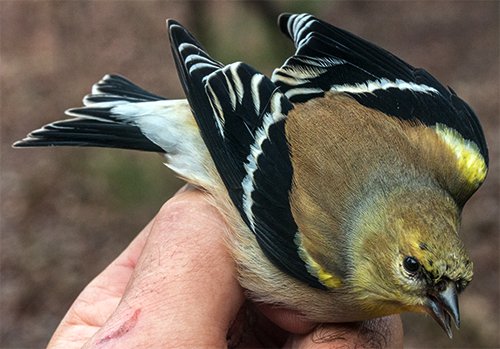
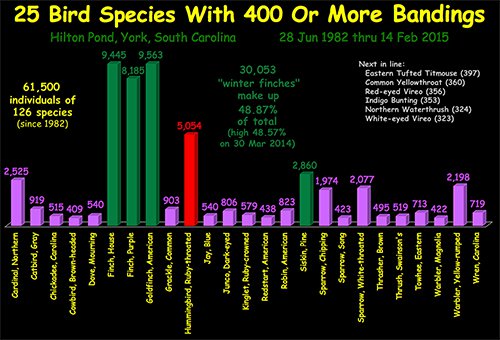
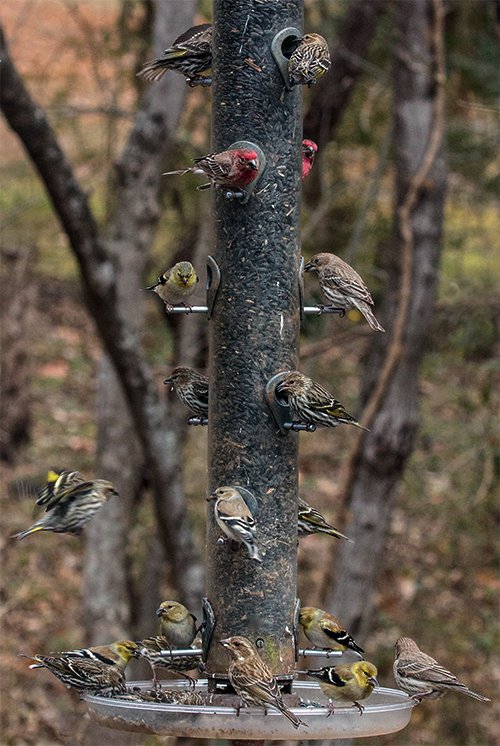


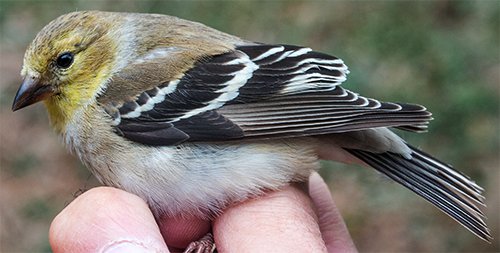
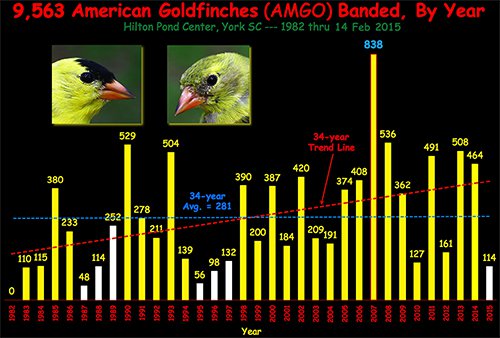
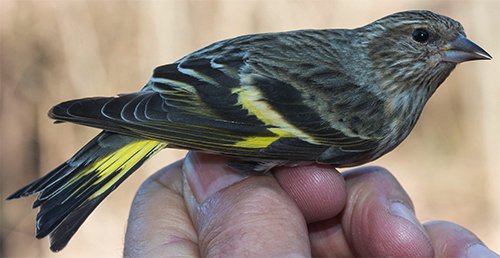

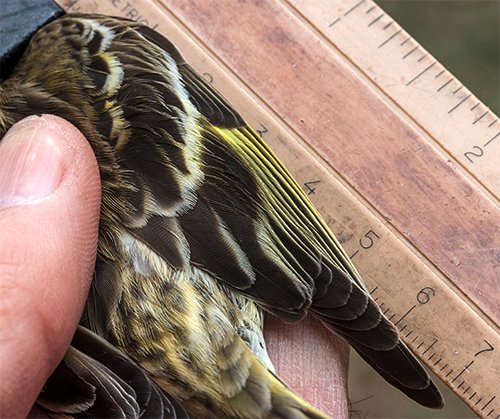
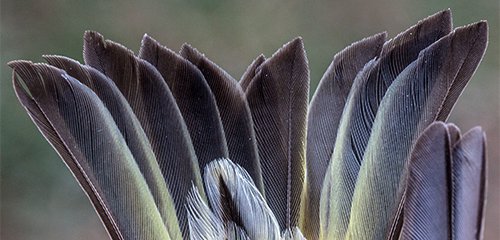
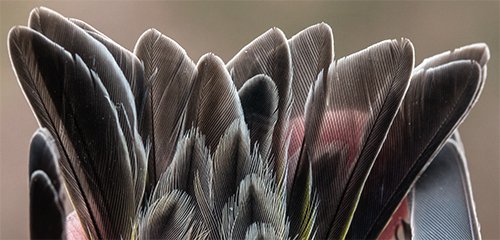
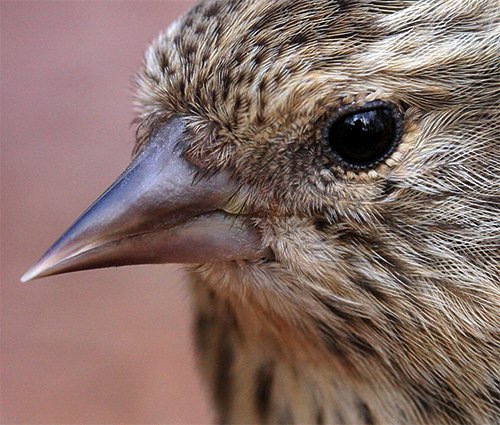



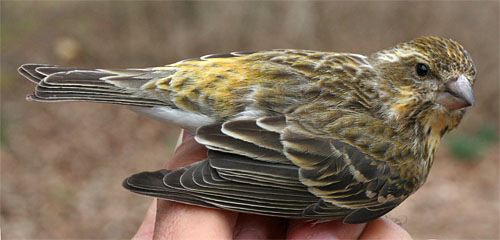
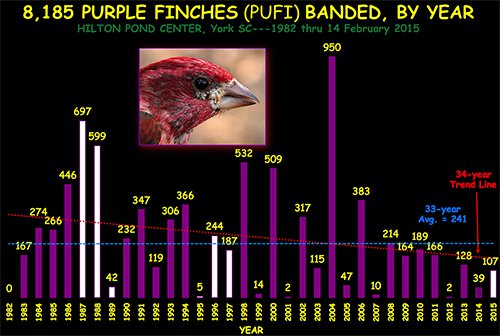
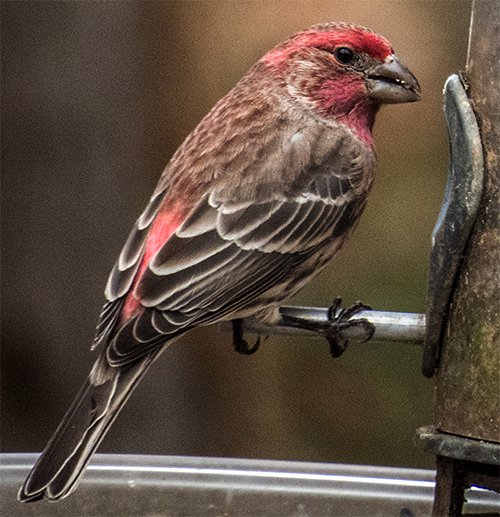
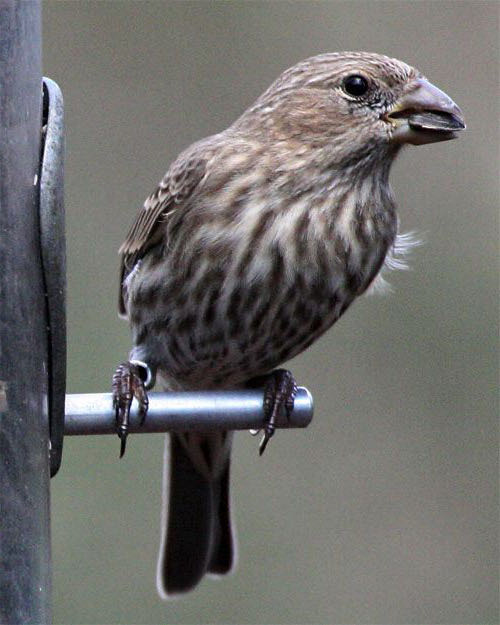
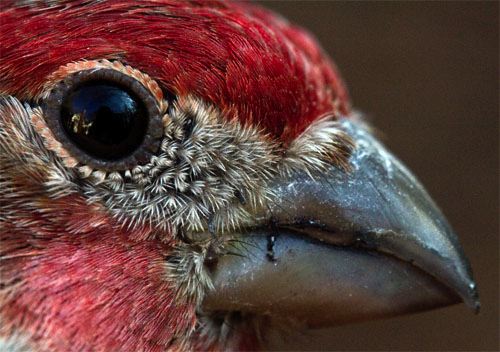

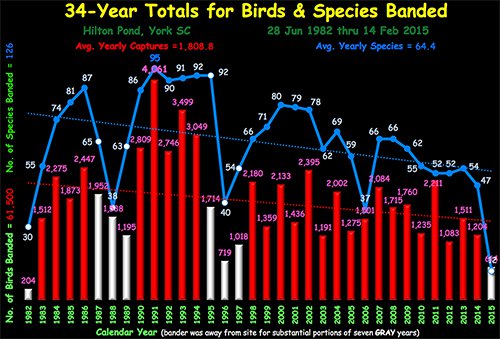








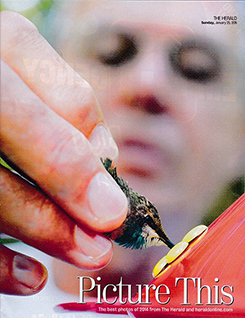
 Oct 15 to Mar 15:
Oct 15 to Mar 15: